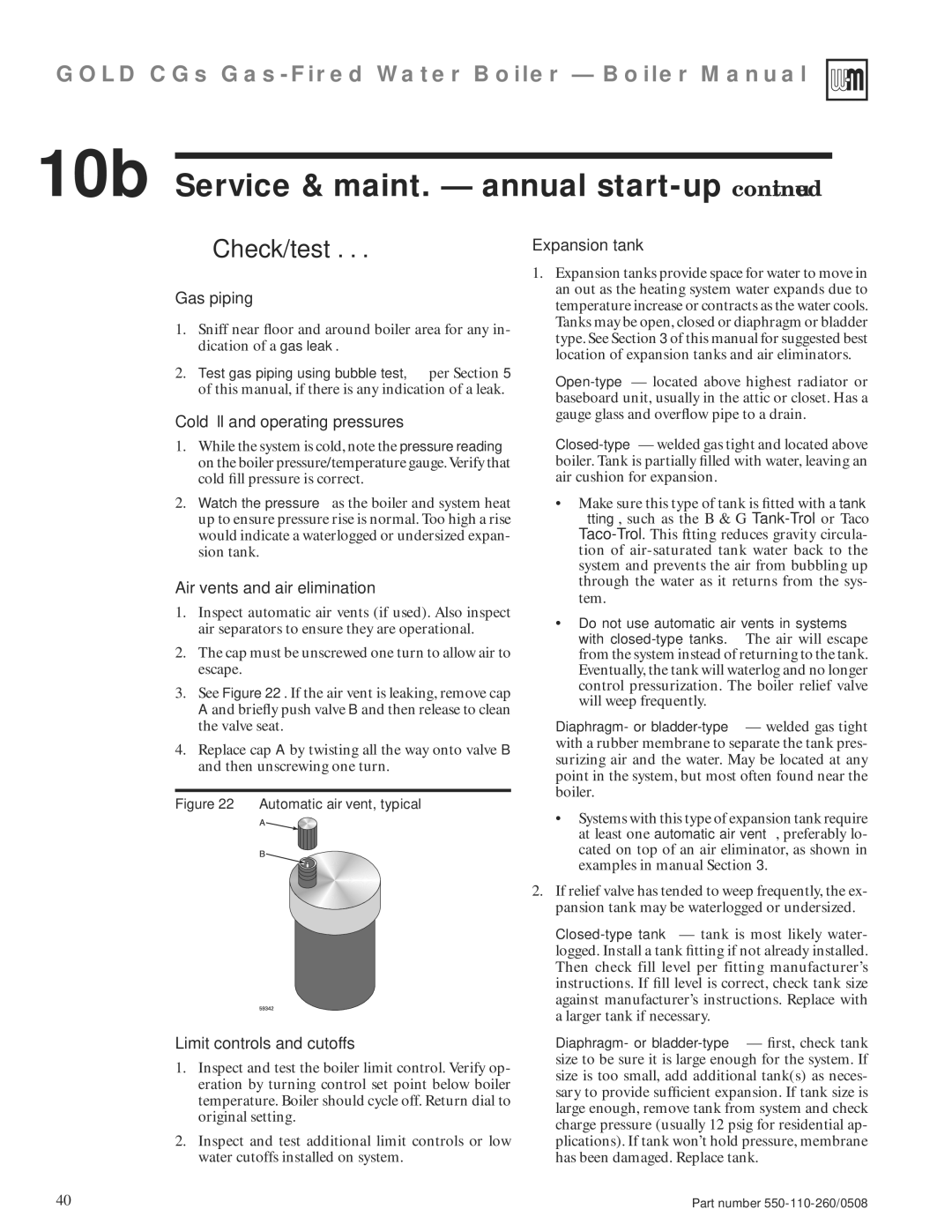550-110-260/0508 specifications
Weil-McLain is a well-known name in the heating industry, offering a wide range of high-quality boilers and heating systems. Among its impressive lineup, the Weil-McLain 550-110-260/0508 model stands out for its performance, efficiency, and advanced technologies, making it suitable for residential and commercial heating applications.The 550-110-260/0508 boiler is designed for flexibility and performance, providing an output capacity of 110,000 BTU per hour. This makes it suitable for various heating needs, from single family homes to larger commercial spaces. One of the key features of this model is its high-efficiency design, which allows it to operate at an AFUE (Annual Fuel Utilization Efficiency) rating of up to 95%. This means that a significant portion of the fuel consumed is converted into usable heat, resulting in lower energy bills and reduced environmental impact.
A standout characteristic of the Weil-McLain 550-110-260/0508 is its durable construction. Built with high-quality materials, this boiler is designed to withstand the rigors of daily use and provide reliable service over the years. Additionally, the unit features a compact design, allowing for easy installation in various configurations, whether it be in a basement, utility room, or outdoor setting.
Another impressive technology incorporated in this model is the advanced control system, which allows for precise temperature management and improved energy efficiency. The intuitive control interface enables homeowners and facility managers to easily set and adjust heating schedules, ensuring optimal comfort while minimizing energy consumption.
Safety is also a top priority for Weil-McLain. The 550-110-260/0508 is equipped with multiple safety features, including a pressure relief valve, limit controls, and a low water cutoff, which help to ensure safe and reliable operation.
In conclusion, the Weil-McLain 550-110-260/0508 model boasts a combination of efficient heating, durable construction, advanced control technology, and safety features, making it an excellent choice for those seeking a reliable and effective heating solution. Its versatility and performance make it well-suited for a variety of applications in both residential and commercial settings.

